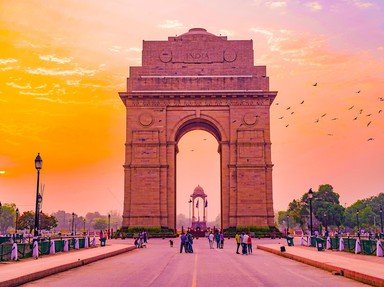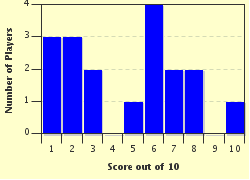Quiz Answer Key and Fun Facts
1. Deccan Plateau, Shivaji, Sindhudurg Fort
2. Khalsa, Ranjit Singh, Battle of Attock
3. Aurangzeb, Din-i-Ilahi, Fatehpur Sikri
4. Mahabalipuram temple, modern form of Brahmi script, Mahendravarman I
5. Maharana Pratap Singh, Chittorgarh fort, Battle of Haldighati
6. Qutub Minar, Razia Sultana, First Battle of Panipat
7. Chandragupta, Pataliputra, "Arthashastra" - treatise on military strategy and economic policy
8. Assam, Moamoria rebellion, Suhungmung
9. 'Golden Age of India', Concept of zero, Samudragupta
10. Konark Sun Temple, Anantavarman Chodagangadeva, Orissa
Source: Author
zorba_scank
This quiz was reviewed by FunTrivia editor
bloomsby before going online.
Any errors found in FunTrivia content are routinely corrected through our feedback system.

